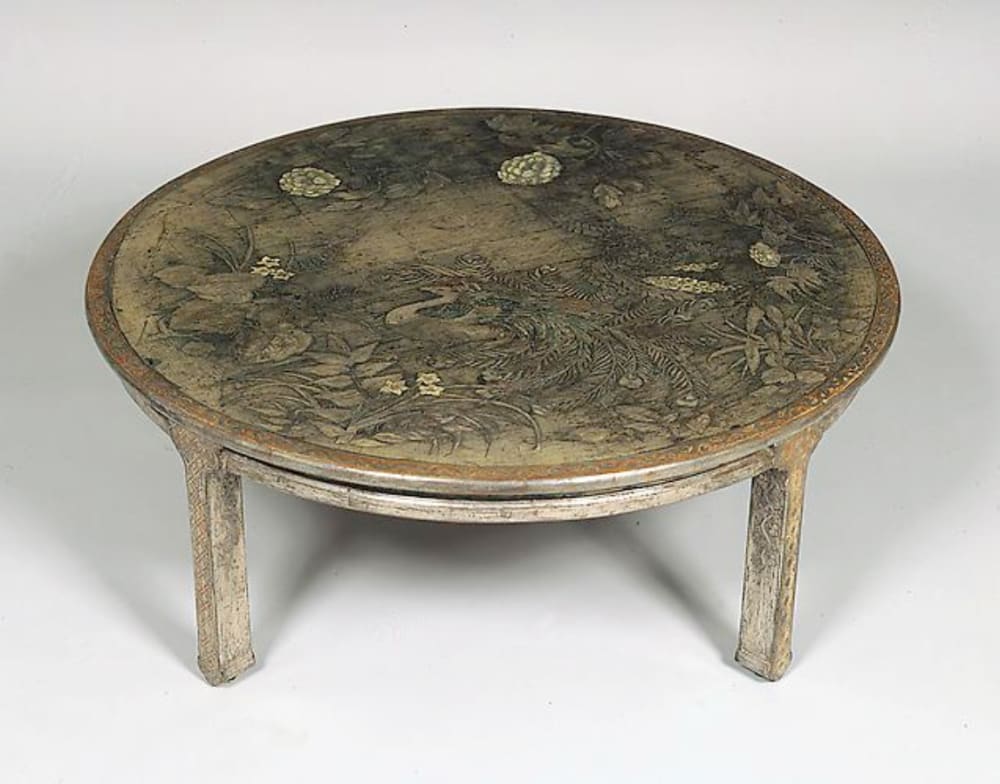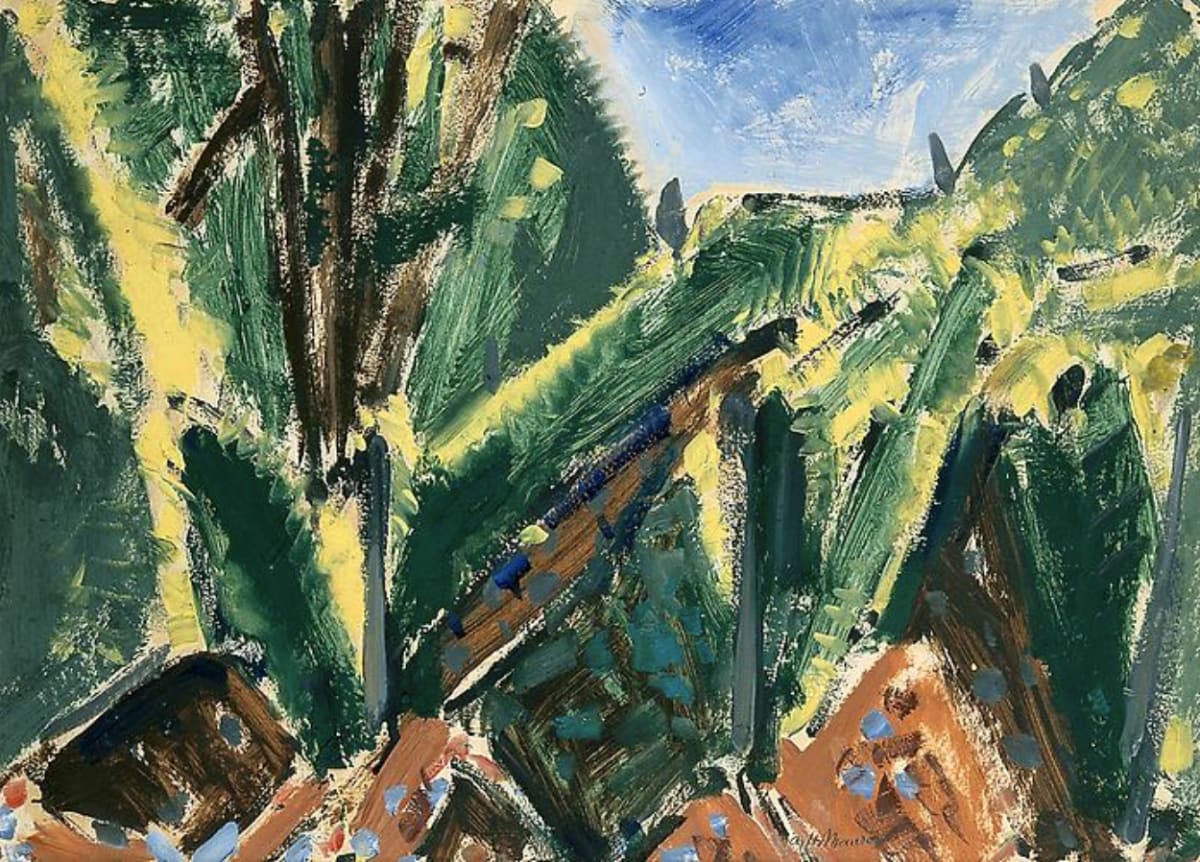
"Their drawings, paintings, sculptures, and decorative objects encapsulate and illuminate the revolution in attitudes toward early twentieth-century American art that has occurred over the last three decades."
Hollis Taggart Galleries is honored to be the only New York City venue to host Living with Art: Early American Modernism from the Baker/Pisano Collection of the Heckscher Museum of Art, an exhibition comprised of 51 Modernist works. These works are among nearly 300 paintings, sculpture, drawings, watercolors, and monotypes, representing both American Modernism and late 19th-century American painting, donated to the Heckscher Museum of Art by D. Frederick Baker and Ronald G. Pisano. The exhibition is mounted as a memorial to Ron Pisano, who passed away in December, 2000.
Hollis Taggart Galleries is honored to be the only New York City venue to host Living with Art: Early American Modernism from the Baker/Pisano Collection of the Heckscher Museum of Art, an exhibition comprised of 51 Modernist works. These works are among nearly 300 paintings, sculpture, drawings, watercolors, and monotypes, representing both American Modernism and late 19th-century American painting, donated to the Heckscher Museum of Art by D. Frederick Baker and Ronald G. Pisano. The exhibition is mounted as a memorial to Ron Pisano, who passed away in December, 2000.
Charged with the energy of the early twentieth century, the Baker/Pisano Collection captures the essence of a vital era in American art. As Avis Berman, author of the catalogue essay "The Baker/Pisano Collection: An Appreciation" writes, "Their drawings, paintings, sculptures, and decorative objects encapsulate and illuminate the revolution in attitudes toward early twentieth-century American art that has occurred over the last three decades." Baker and Pisano were prescient collectors, mining the early part of the twentieth century for unusual, experimental art works that reflected their collecting sensibilities. These works resonate with relationships, both personal and professional, and attest to the remarkable care with which each has been chosen. They testify to a discerning vision and scholarly pursuit, a shared passion for collecting, and to the lasting joy of living with art.
Within our townhouse/gallery atmosphere, Hollis Taggart Galleries has the rare opportunity to offer each visitor a glimpse of what it is like to live among these works of art, to unfold each object’s unique story, and to appreciate the way the works of art relate to one another. As Fred Baker states in the catalogue’s introductory essay, "The collection also came to celebrate the inter-connectiveness of art and artists that made up America’s early modern art community. The period is one of the richest in terms of fascinating personalities, turf-fighting, new and unexplored art directions, and a kind of unbridled inventiveness."
Every work in the collection reveals the intricate ties that link these seemingly disparate artists and works. Baker and Pisano’s varied tastes indicate a penchant not only for paintings, but also for rare decorative objects, sculpture, and furniture. Charles Prendergast and Max Kuehne both worked in the decorative arts, producing frames and furniture, as well as using an unusual gilding technique in paintings that incorporated Eastern decorative motifs. Monumental Paul Manship candelabra and an Arthur B. Davies tapestry of rhythmic nudes also reiterate Baker and Pisano’s abiding principle of collecting paintings and decorative objects that give pleasure to live among.
Ronald G. Pisano devoted much of his scholarship to the art of William Merritt Chase, as well as to Chase’s students, and several of the works in the collection bear links to Chase’s legacy as a great teacher. Joseph Stella, the progenitor of Futurism in America, studied with Chase, and although his futuristic cityscapes belie this training, several of his paintings, including the pastel Water Lily to which Baker and Pisano were drawn, intimate the romantic elements of Chase. Other Chase students represented the collection are Edwin Dickinson, Guy Pène du Bois, and Alfred Maurer.
The Baker/Pisano collection also charts the course of the early proponents of modernism, with paintings by such visionary artists as Arthur Dove, Manierre Dawson, John Marin, Georgia O’Keeffe, and Max Weber. A work by Joseph Cornell, replete with Cornell’s characteristic penchant for mystery and surprise, reinforces the collection’s focus on an area of American art that, at the time they were amassing the majority of their holdings, remained largely overshadowed by later developments in American art.
Baker and Pisano were also attracted to the various personalities that composed the circles at the forefront of vanguard art in the early part of the century. The various groupings of artists that revolved around Juliana Force and Gertrude Vanderbilt Whitney, the Art Students League, and the summer communities in Maine and Woodstock, New York overlapped at times, and Baker and Pisano collected works that revealed these affiliations. Works such as Florine Stettheimer’s portrait of Louis Bouché, Peggy Bacon’s caricature of the legendary dealer Edith Halpert, and (Samuel) Wood Gaylor’s depiction of Kenneth Hayes Miller’s birthday party all depict the collective, communal spirit present in the first decades of the century, an environment where artists were sharing in the development of American modernism and looking to one another for inspiration and support. Baker and Pisano celebrated these stories, these groupings, these relationships–for they individualized each art work, bringing a human, narrative element to the overall collection. In this sense, their collection is a history of American modernism, a storybook of moments in the evolution of early twentieth-century American art, and a paean to the richness of living with these remarkable objects.
A fully illustrated color catalogue, with an essay by Avis Berman and notes on each entry by D. Frederick Baker, is also available.
Information on the Heckscher Museum of Art
Located in Huntington, Long Island, the Heckscher Museum of Art was founded in 1920 by the philanthropist August Heckscher. Its permanent collection of approximately 1,800 works of art includes fine examples of European and American painting, sculpture and prints dating from the 15th through the 20th centuries. The Museum also owns and is in the process of restoring the nearby home of modernist painters Arthur Dove and Helen Torr.
The recent gift of the Baker/Pisano Collection greatly enhances the Museum’s modernist and nineteenth-century holdings, and, in recognition of this remarkable bequest, the permanent collection galleries of the Heckscher Museum of Art have been named the Baker/Pisano Galleries.
Information about current exhibitions and educational programs is available on the Heckscher’s website: www.heckscher.org.

















